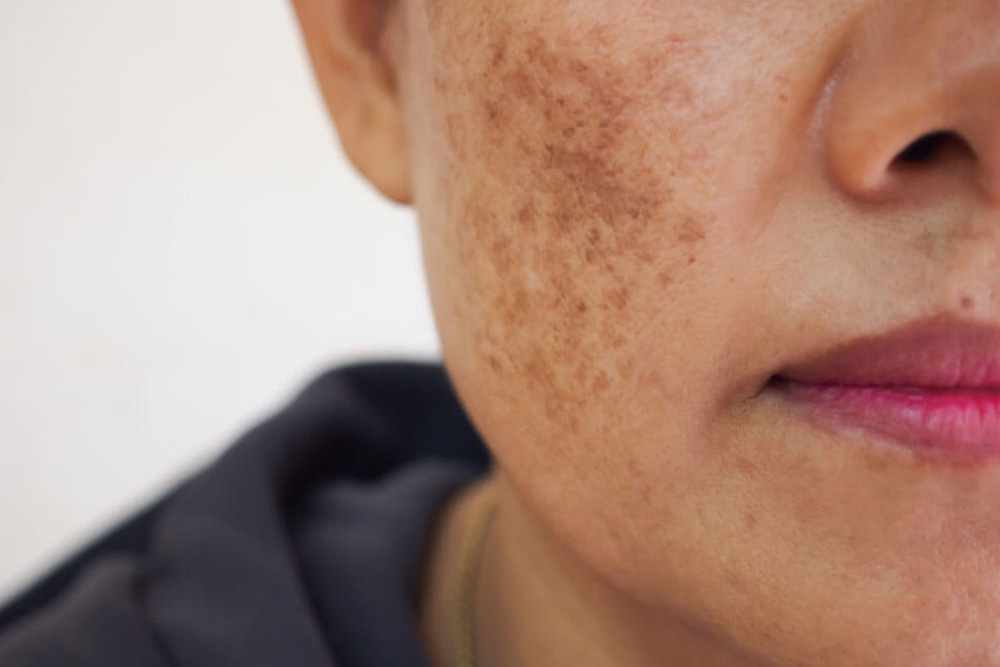Melasma Treatment
What to Know About
Melasma
Commonly identified as a “mask of pregnancy,” melasma is the darkening of skin on the face. Usually melasma appears as patches of brown, tan or blue-gray discolorations. Although anyone can develop melasma, this condition most frequently affects pregnant women, those taking certain hormones or oral contraceptives. Sun exposure and genetics can also play a part in melasma. People with darker skin tones, like anyone with a Latin, Asian, Indian, Middle Eastern, Mediterranean or North African ancestry tend to be more prone to melasma.

Causes
Experts have yet to determine the exact cause of melasma, but they believe that certain factors can trigger the condition. Pregnancy, birth control pills, hormone replacement therapy, progesterone, heredity, race and medications can make the skin more prone to pigmentation after exposure to ultraviolet (UV) lights. Over exposure to the sun is the leading contributor to the development of melasma. Also, products that cause irritation to the skin may speed up melanin production and lead to an increased risk for melasma.
How Melasma Develops
Usually, melasma follows one of three patterns, centrofacial, malar and mandibular. The most common type, centrofacial, a pattern appears on the cheeks, forehead, upper lip, nose and chin. The malar pattern develops over the cheeks and nose and the mandibular pattern involves the side of the cheeks and jawline.
Treatments
Often, melasma will start clearing up after childbirth or once oral contraceptive use has stopped. If it does not clear up naturally after those changes, there are several treatment options your dermatologist may recommend.
One effective therapy for melasma combines sunscreen, bleaching and time. Without an all encompassing layer of sunscreen on the face, no treatment will succeed. Use sunscreen of at least 30 SPF, a light cover-up of make-up and a wide brimmed hat. For bleaching, the applications will include two or four percent hydroquinone-containing creams or gels and a three percent hydroquinone solution. Treatment can take up to two months to start working and up to six months for the complete process. We offer a rotational treatment schedule to protect your skin and get the best possible results.
Laser therapy for melasma is a safe alternative to the more common treatments with topical creams and chemical peels, especially for dermatology patients with refractory cases. Your dermatologist can let you know if you are a good candidate for laser melasma treatment, and can let you know what to expect before, during and after treatment.
